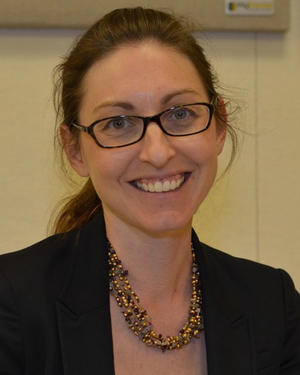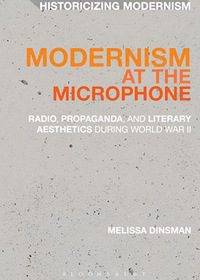
- York College
- Assistant Professor of English
- Affiliation During NDIAS Fellowship: University of Notre Dame
- Graduate Fellow (2012-2013)
- Radio at War: Literature, Propaganda, and the Emergence of New Modernist Networks during World War II
Melissa Dinsman is Assistant Professor of English at York College-CUNY and author of Modernism at the Microphone: Radio, Propaganda, and Literary Aesthetics During World War II. Her research focuses on the intersection of modernism and media aesthetics, which brings together her interests in modern literature, archival recovery, and information networks.
Dinsman’s most recent work can be found in Contemporary Women’s Writing, The Space Between, the L.A. Review of Books, and n+1. She also has publications forthcoming on Mrs. Miniver and wartime adaptation in Modernism/modernity and teaching WWII women’s writing for the MLA’s Teaching Modernist Women’s Writing in English.
york.cuny.edu/portal_college/dinsman-melissa
Publications
-
Modernism at the Microphone: Radio, Propaganda, and Literary Aesthetics During World War II
Bloomsbury, 2017

As the Second World War raged throughout Europe, modernist writers often became crucial voices in the propaganda efforts of both sides. Modernism at the Microphone: Radio, Propaganda, and Literary Aesthetics During World War II is a comprehensive study of the role modernist writers’ radio works played in the propaganda war and the relationship between modernist literary aesthetics and propaganda. Drawing on new archival research, the book covers the broadcast work of such key figures as George Orwell, Orson Welles, Dorothy L. Sayers, Louis MacNeice, Mulk Raj Anand, T.S. Eliot, and P.G. Wodehouse. In addition to the work of Anglo-American modernists, Melissa Dinsman also explores the radio work of exiled German writers, such as Thomas Mann, as well as Ezra Pound’s notorious pro-fascist broadcasts. In this way, the book reveals modernism’s engagement with new technologies that opened up transnational boundaries under the pressures of war.